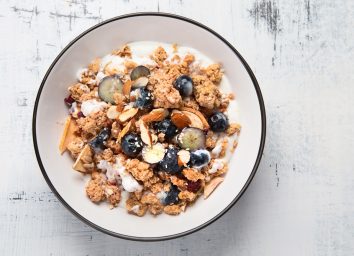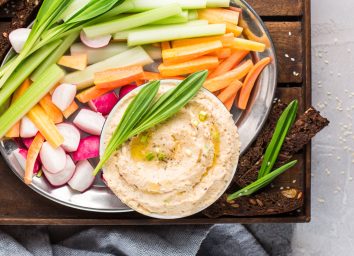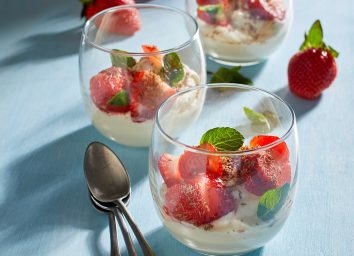7 Healthy Snacking Habits for a Flat Belly
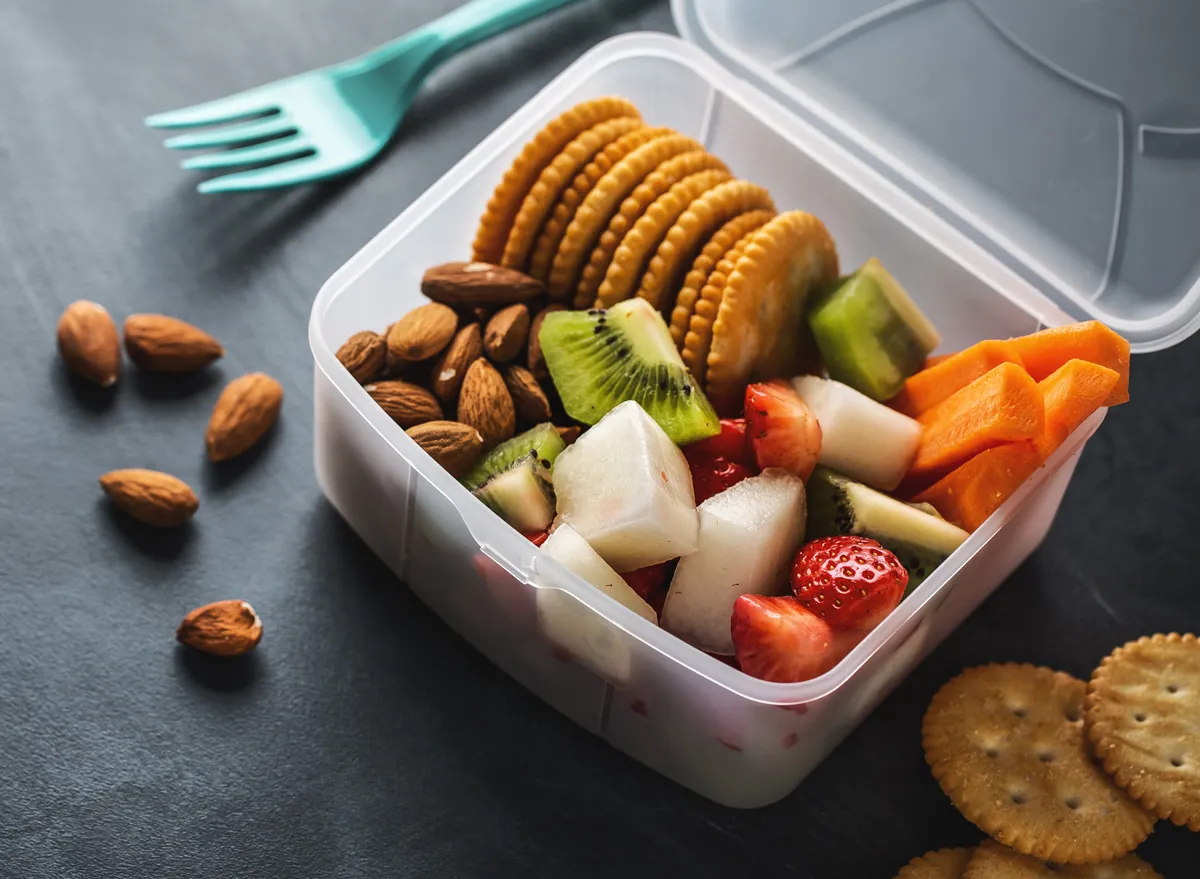
Who doesn’t love a good snack? Between the numerous healthy snack options at the grocery store, or even the yummy snack recipes you can make at home, having something fun to snack on in the middle of the day truly feels like a treat. So why does snacking always get a bad rep? Is there such a thing as forming healthy snacking habits in the long run?
Why yes, yes there is. In fact, numerous registered dietitians and doctors say that incorporating a snack into your daily meal plan is actually really good for your body, and can help you regulate your blood sugar and avoid any belly bloat.
So if you absolutely love snacking and want to maintain a healthy body (and a flat belly), here are a few healthy snacking habits to incorporate into your days. And for more healthy eating tips, be sure to check out our list of 21 Best Healthy Cooking Hacks of All Time.
Eat every 3-4 hours to keep your blood sugar stable.
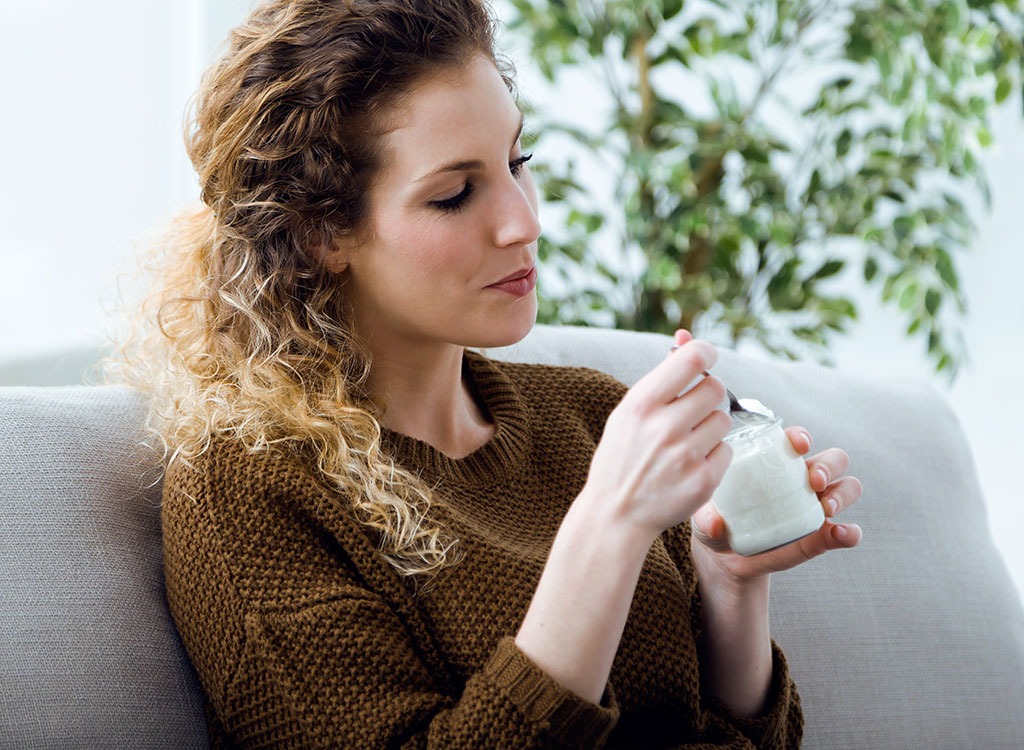
While it may seem counterintuitive towards your weight loss efforts, it’s actually important for your overall health and blood sugar levels to eat something at least every four hours throughout the day.
“Snacks are an essential part of a healthy balanced diet,” says Jean Hanks, MS, RDN, CDN from Bethany Medical Clinic of NY. “It’s a good idea to eat every 3-4 hours to keep blood sugars stable, which not only prevents hunger-related crankiness (‘hanger’) but can help prevent overeating at the next meal. So ideally, you would have a snack between breakfast and lunch, and between lunch and dinner.”
Not sure what to have? Here are 15 Snacks Nutritionists Eat Every Day.
Snack on foods that contain protein and fiber.
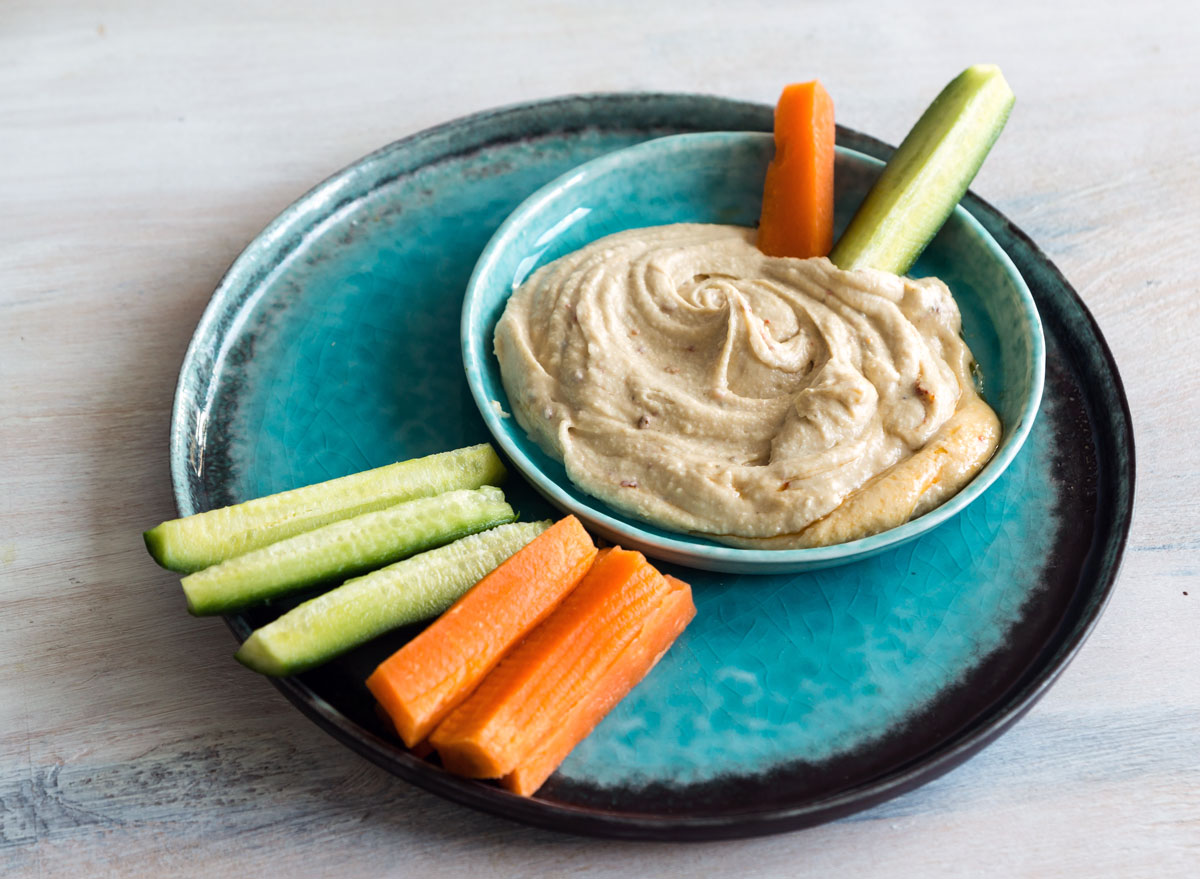
“The best snacks provide a combination of protein and fiber, both of which contribute to satiety,” says Hanks. “The protein could come from nuts/nut butters, hummus, yogurt, avocado, or the like. The fiber component could be fruit, raw vegetables, or whole grains. Apple slices with peanut butter, whole grain tortilla chips with guacamole, and carrot sticks with hummus are some examples of great snacks that provide both protein and fiber. Protein bars can also be an excellent snack, provided they are mostly full of whole, unprocessed ingredients, contain less than 10grams sugar, and have 5 grams protein or more.”
Give your snacks a fiber boost with these 25 Best High-Fiber Snacks to Buy That Keep You Full.
Incorporate a carbohydrate.
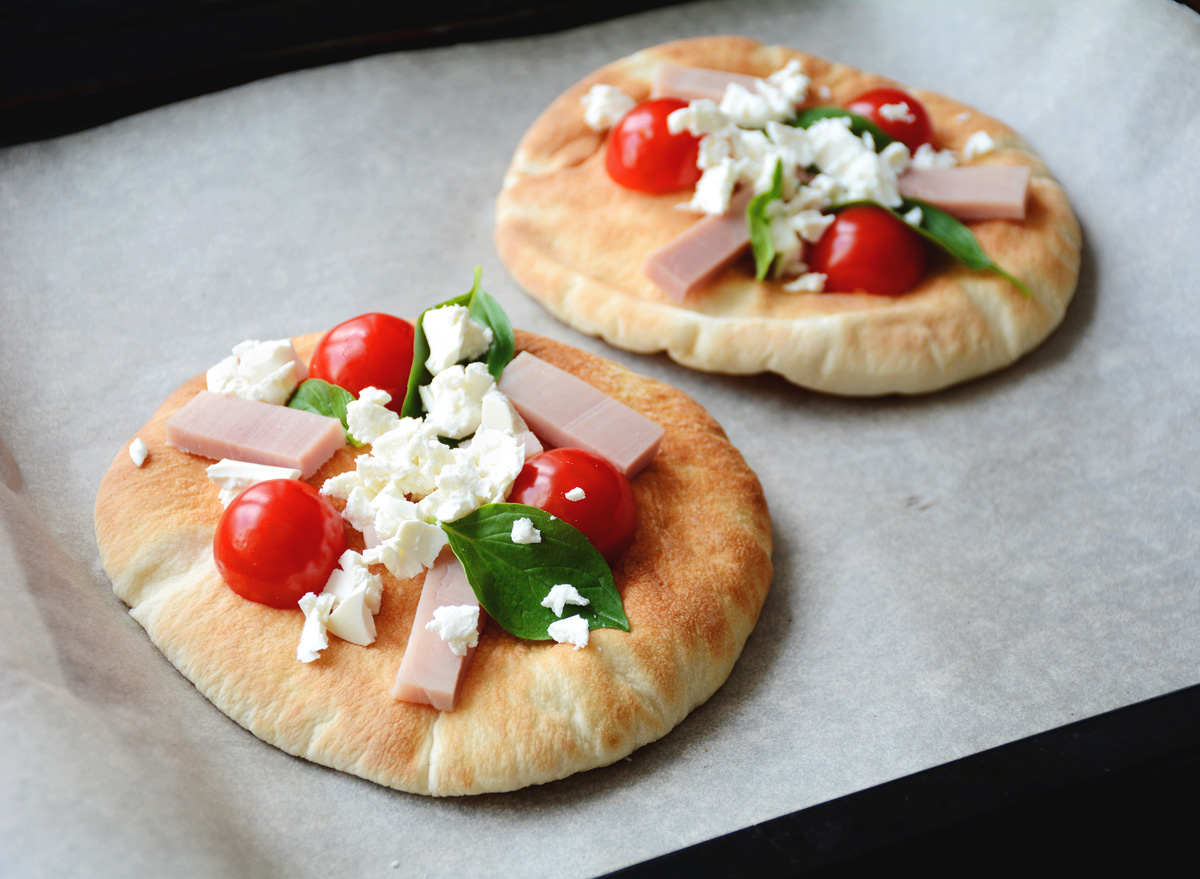
That’s right—don’t be afraid of carbs! Sarah Schlichter, MPH, RDN of Bucket List Tummy says it’s important to incorporate carbohydrates to keep you feeling full for a longer period of time after your snack.
“By combining a source of carbohydrate and protein, for example, people are more likely to feel full and satiated, and less likely to mindlessly munch or continue snacking,” says Schlichter. “Whether working from home or the office, keeping nutrient-dense snack options on hand is paramount.”
Schlichter includes a few examples that can boost your carbohydrate and protein intake during your snack time such as a piece of fruit with string cheese, whole grain bread with peanut butter, Greek yogurt and fruit, and hummus with vegetables. Or try one of these 15 Toast Recipe Ideas!
Prep your snacks.
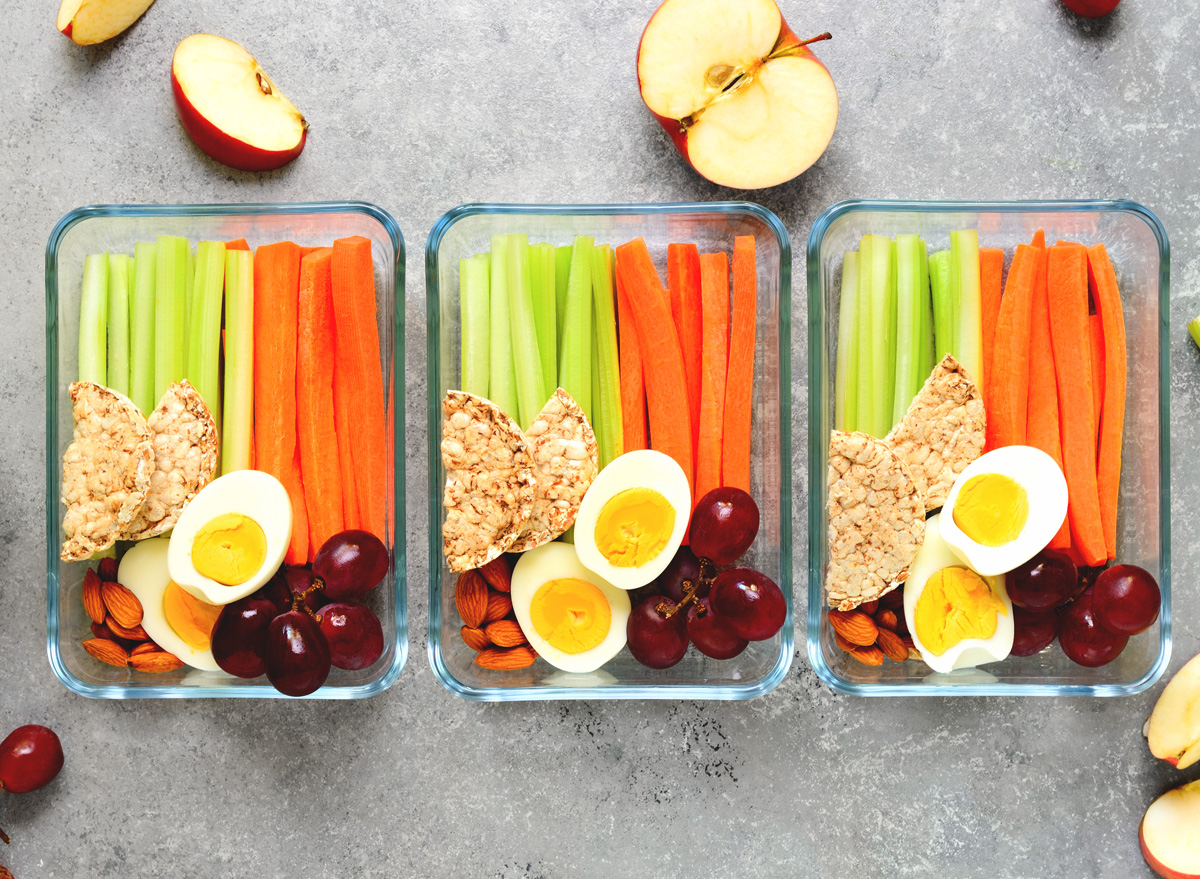
It may seem silly, but in order to set healthy snacking habits for yourself, portion control is still important when it comes to maintaining a healthy weight.
“One reason snacking gets a bad rap is because of mindless munching and lack of portion control,” says Dr. Tonya Sweezer, DO, ND. “We are often snacking because we don’t have time for a full meal, so we are too distracted to keep track of our intake.”
Sweezer recommends selecting snack items in advance before your hunger messes with the judgment around your food choices. Having a snack prepared will help with overeating.
“Healthy snacks such as chopped veggies, nuts or fruit should be easily accessible,” says Sweezer. “This way you are less likely to reach for unhealthy items. Choosing healthier items helps to reduce cravings and keep you on track.”
Not sure how to measure proper portions? Here’s What the Perfect Food Portion Sizes Actually Look Like.
Treat it as a meal and don’t mindlessly snack.
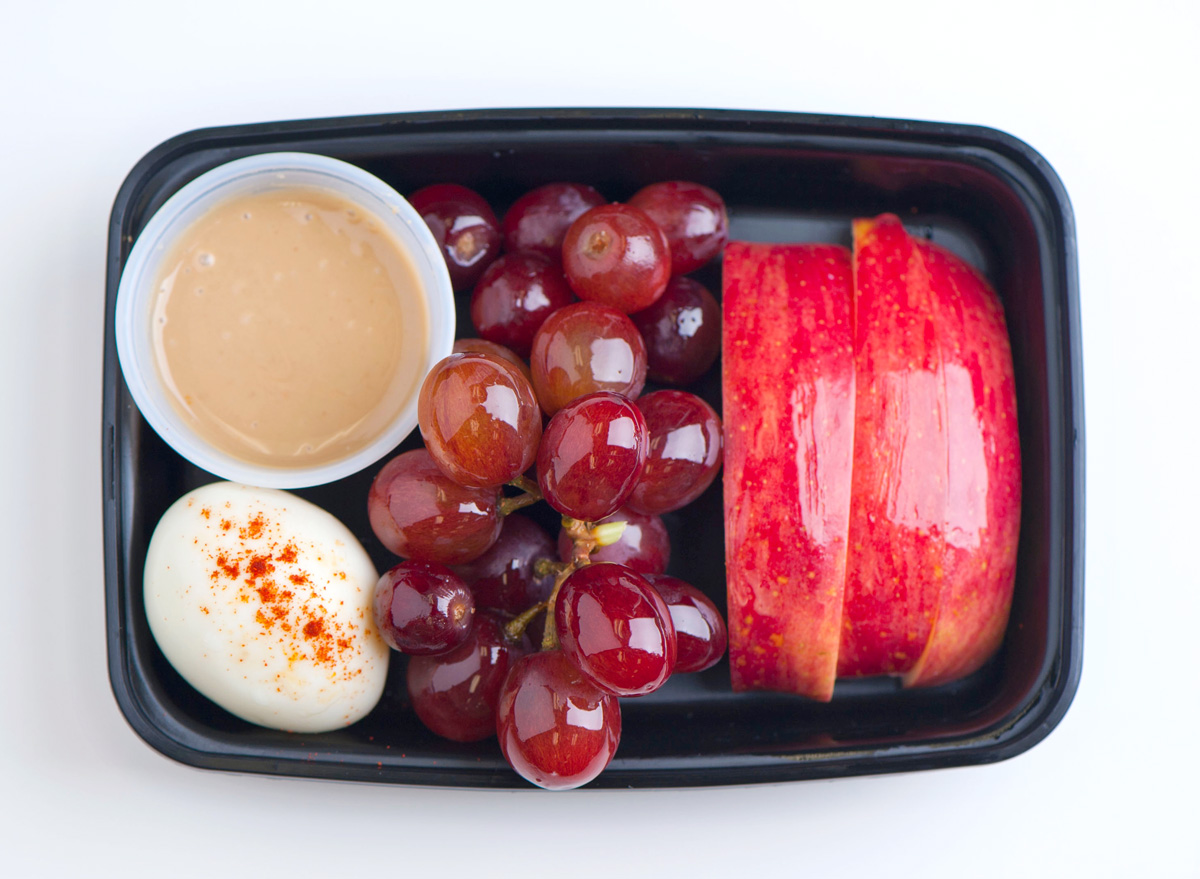
Just because it’s called a “snack” doesn’t mean it has to be small. In fact, it’s best if you look at your snack time as an actual meal that can provide you with those satiating macronutrients—carbohydrates, protein, and fat—that will help you feel full until dinner. Treating your snacking time as meals rather than snacks can avoid any quick blood sugar spikes and dips that happen when you eat something quick that isn’t satiating for a long period.
Dr, Laura C. Stix, H.BSc, CCHt, ND, points this out specifically when talking about mindless snacking that happens between meals.
“The reason that snacking between meals is to be avoided is because every time we consume a food, regardless of what it is, some insulin is produced and insulin is our fat-storage hormone,” says Stix. “This means even eating some almonds will produce some insulin and we are not burning fat when insulin is present (and this is why diabetics who use insulin just gain weight from it). For people attempting to lose weight through food, snacking is a very bad strategy.”
Stix says that in order to properly enjoy the snacks you love and avoid crazy blood sugar spikes, incorporate it with a small meal that you can consider your “snack” for the day. For example, if you want a piece of chocolate, enjoy that with a little meal made of apples with peanut butter, veggies andwithhummus, or dried beet chips with guacamole. Eat the chocolate—or whatever sweet treat of choice—immediately with the meal so you can avoid blood sugar spikes and inevitable weight gain that comes with it.
Don’t be afraid to go over 100 calories.
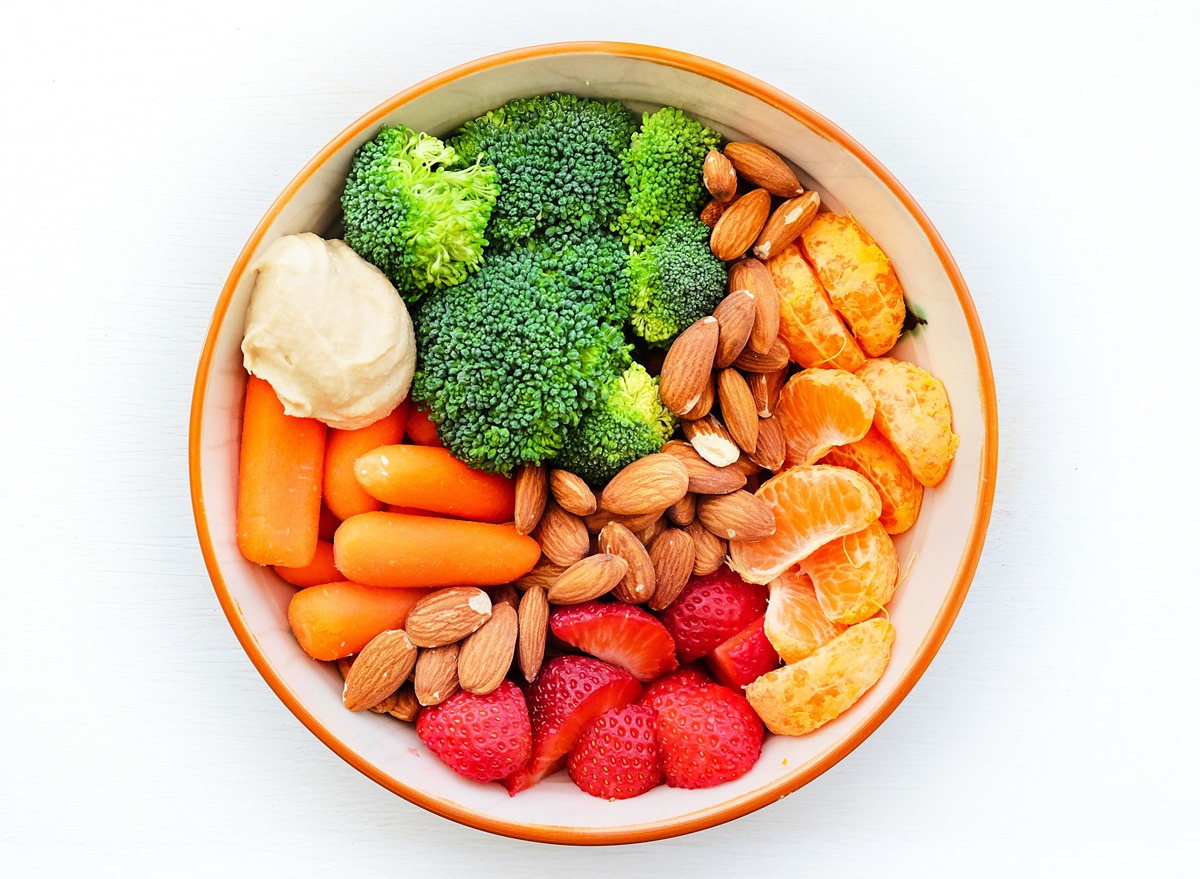
You may see trendy snacks on the shelf that promise healthy eating with just 100 calories a pack. Guess what, you don’t have to snack that way! In fact, it will just leave you feeling hungry.
“Don’t be afraid of snacks that provide over 100 calories! So many people have this food rule ingrained in their mind that snacks should be under 100 calories, however that’s not true,” says Colleen Christensen, RD. “Many times we need more than that to sustain us to our next meal. Start to pay more attention to your hunger level and you’ll begin to understand more of the size of snacks your body needs. The hungrier you are, the larger your snack likely needs to be and if you shoot for a self-imposed 100 calorie ‘limit’ you’re likely to be left feeling ‘hangry’ and frustrated.”
Pair your snack with fluid.
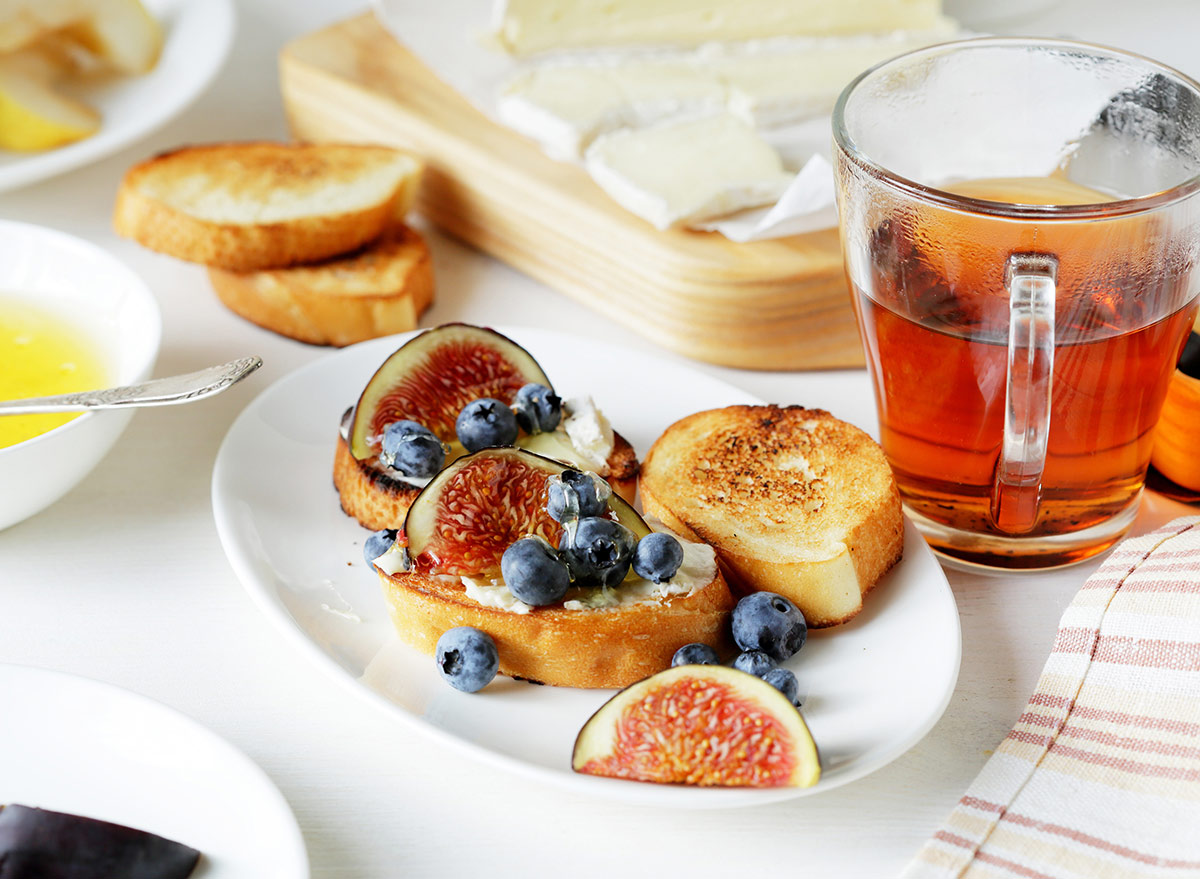
Lastly, it’s important to continue drinking fluids throughout the day—especially if you’re incorporating a snack that has fiber in it. And while drinking water is important for your body, that doesn’t have to be your only option.
“I also recommend pairing your healthy snack with a cup of fluid —water first for hydration or try herbal tea or flavored sparkling water,” says Leah Van Dolder, BScFN, RD. “Getting into the habit of having healthy snacks on hand helps to keep our energy levels up, our blood sugars stable, and prevents that afternoon dip in focus and productivity.”
So, what about dessert? Yes, you can have that, too! Here are 5 Healthy Dessert Habits For A Flat Belly.
